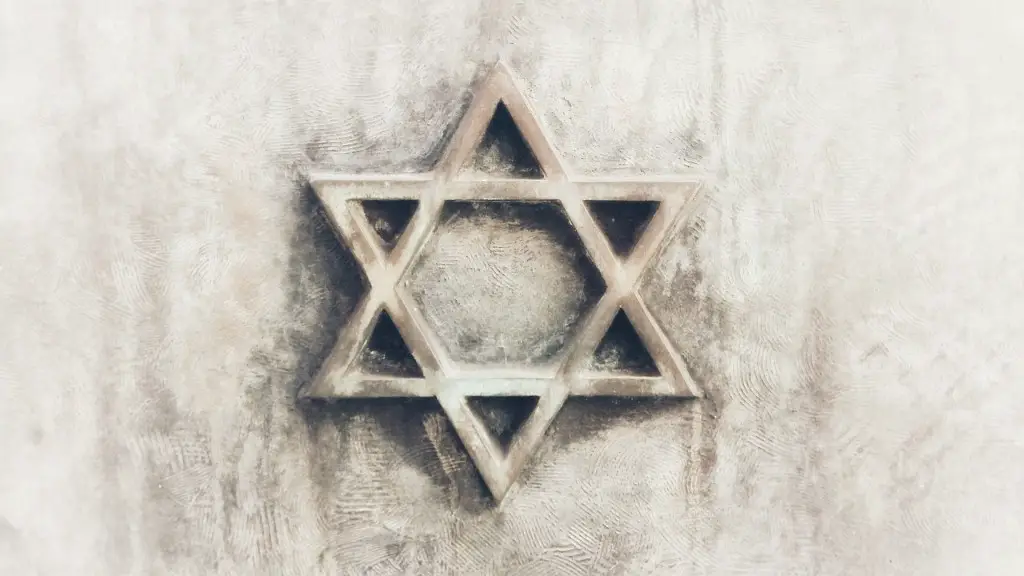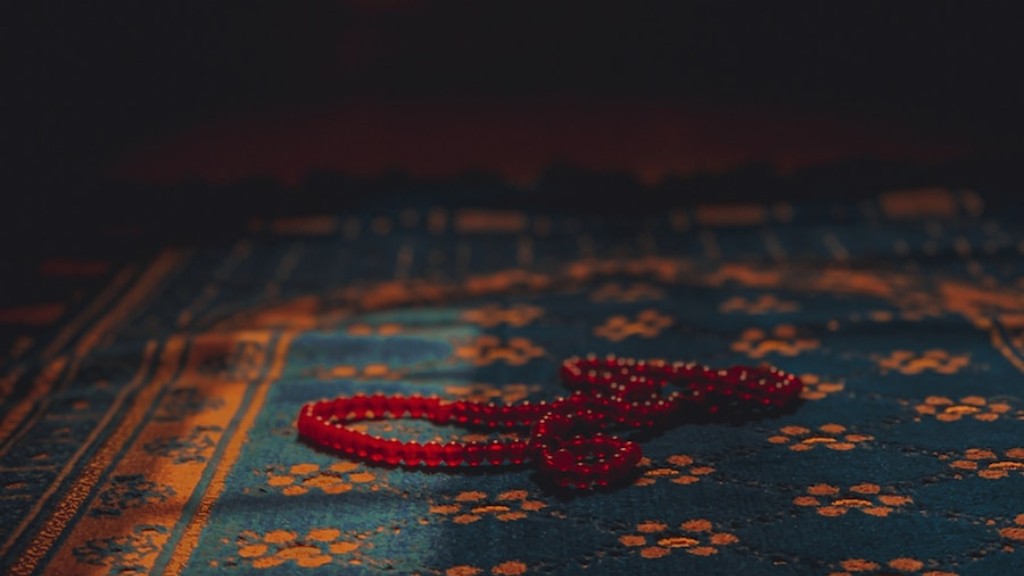The Journey to Liberation
Hinduism is a vast religious and spiritual practice, which has been evolving over centuries. One of the most central aspects of this practice is the belief in the afterlife. Hindus believe that death is not an end, but rather a start of a journey. After death, souls cross over to a different realm and start an important journey in which they can reach liberation or eternal freedom.
According to the ancient Hindu texts, when a person dies, the material and spiritual bodies separate. The physical body, also known as the ‘sthula-sarira’, is the material body that is subject to the laws of Nature and is made up of five gross elements. Upon death, the physical body disintegrates and returns to the cycle of Nature or ‘Samsara’. On the other hand, the subtle body, or ‘suksma-sarira’, consists of the spirit and the subtle energy associated with it. This energy is created by the karmas of the individual and determines whether or not they will cross to a new realm.
Based on this belief, Hinduism believes that different realms are available to people after death. The ‘celestial’ bourn, also known as ‘svarga’, is the most beautiful and pleasant of them all, while the ‘hell’ bourn is the worst and most painful one. The traditional Hinduism texts describe these different realms as realms of punishment and reward, where people experience the consequences of their deeds either in the form of joy or suffering. In such realms, the soul can be challenged and cleansed, before climbing higher up the spiritual ladder.
The ultimate aim of the Hindu belief system, however, is not to stay in such realms, but to climb higher to a space that is free from all suffering and is known as ‘Moksha’ or ‘liberation’. This is the ultimate goal of the soul after death and requires that the individual attains perfect spiritual knowledge and wisdom.
In order to reach this goal, Hindus believe that souls must pass through a cycle of multiple births and deaths. This process is known as ‘Samsara’, and it is based on the belief that every individual has multiple karmic connections to others, and each connection determines their next birth. For example, if an individual has negative karma, they will be reborn in a realm where they will experience pain and suffering; while if they have positive karma, they will be reborn in a realm where they will experience joy and pleasure. The ultimate aim of Samsara is to enable individuals to reach liberation and the realm of ultimate bliss.
The Eight Stages of Dharma
Apart from the realms that are available to individuals after death, Hinduism describes an eight-step process that an individual needs to go through in order to reach Moksha. This process is known as the ‘ashtanga-dharma’, or the ‘eight stages of dharma’. These stages are referred to as ‘dharmas’ and include: shanti-dharma (peace), Grihastu-dharma (family life), Vanaprasta-dharma (retirement), Sannyasa-dharma (renunciation), Dharma-dharma (duty and karma), Mantra-dharma (chanting god’s name), Swadhyaya-dharma (self-study) and Brahmacharya-dharma (abstinence).
Each of these stages represents a different level of spiritual progress, and by adhering to the teachings and duties of each stage, an individual can reach a higher level of spiritual knowledge. This can lead to self-realization and liberation, as described in the Hindu scriptures.
The Three Yogic Paths
According to the Hindu teachings, there are three main ways in which individuals can reach salvation and enlightenment. These paths are known as ‘Yogic Paths’ and include: Bhakti-Yoga (the path devotion), Karma-Yoga (the path of action) and Jnana-Yoga (the path of wisdom). Each of these paths is based on a different approach and mindset, and it is up to the individual to decide which path they want to follow in their journey to liberation.
The path of devotion is based on the idea of surrendering to God and allowing your heart to open to the power of divine love. This path involves engaging in prayers, devotional service and chanting the names of God in order to connect with the divine and attain liberation.
The path of action focuses on engaging in deeds and activities that are based on good ethics and morals. This path requires that individuals perform their duties and responsibilities in a rightful manner and with a sense of detachment from their outcome. Such attitudes drive individuals towards liberation.
Finally, the path of wisdom focuses on acquiring knowledge and understanding spiritual teachings in order to attain liberation through wisdom. This path requires that individuals practice meditation and self-reflection, and use such practices to understand the ultimate reality and the nature of self.
The Key to Liberation
The key to all three yogic paths is desire-lessness and detachment. Hinduism teaches that desires and attachments are the cause of all suffering, and therefore, if individuals can detach themselves from these desires and attachments, they can achieve liberation. This sense of detachment is an important part of the journey to liberation, and all of the yogic paths are based on achieving this detachment in one form or another.
It is important to note, however, that while detachment is an essential part of the journey to liberation, it is not possible to attain liberation without also having faith and devotion in the divine. In Hinduism, faith and devotion in the divine form the foundation of all other spiritual practices, and it is this foundation that enables individuals to reach their ultimate goal of liberation.
Importance of Guru
The Guru is the beacon who leads individuals along the path of spiritual enlightenment. In Hinduism, a Guru is seen as a living embodiment of the divine and an example for individuals to follow in their journey towards liberation. The Guru leads by example and gives guidance to devotees on how to practice the yogic paths and how to develop the qualities of acceptance, detachment, compassion and devotion.
The Guru acts as a mentor and guide to those who are seeking liberation and provides the necessary tools and techniques to reach the ultimate goal. Thus, a Guru plays an important role in the process of reaching liberation, and they are seen as an essential part of the spiritual path.
Role of Sadhana and Karma
The journey to liberation also involves engaging in spiritual practices known as ‘sadhana’. Sadhana is a Sanskrit term that literally means ‘practice’, and it is used to refer to the various spiritual practices that individuals can use to grow and progress spiritually. Such practices include yoga, meditation, chanting and study of scriptures, and they provide individuals with the necessary tools and techniques to reach liberation.
Karma also plays an important role in this journey, as Karma determines the individual’s next birth. It is believed that individuals create their own karma through their thoughts and actions, and it is this karma that will determine their next birth and each subsequent one until they are able to reach liberation.
The Ultimate Goal: Moksha
The ultimate goal of Hinduism is Moksha or liberation, and it is believed that by engaging in spiritual practices and advancing along the yogic paths, individuals can reach this goal and be free from the cycle of birth and death. Moksha is an inner state of peace and calm, and it represents the ultimate union of the individual’s soul with the divine. It is a state of perfect freedom and bliss, and it can be attained through a combination of knowledge, wisdom and devotion.
Living a Spiritual Life
The journey to liberation is the ultimate goal of Hindus, and the entire spiritual practice is designed to help individuals attain this goal. Thus, the spiritual life is an important part of Hinduism and it involves engaging in spiritual practices and service to the divine, as well as cultivating mental peace and detachment from material desires. Such lifestyle helps individuals to progress spiritually and become receptive to divine guidance, and thus, enables them to reach liberation.
Role of Selfless Service
Selfless service is also an important aspect of the spiritual path, and it involves dedicating one’s actions and life to helping, guiding and inspiring others. By engaging in such service and using our time, energy and resources to benefit others, we can create a positive karmic energy that can help us to reach Moksha.
Selfless service not only helps others, but it also provides individuals with the opportunity to develop humility, compassion and selflessness. Such qualities are essential for achieving liberation, and thus, selfless service is an important part of the spiritual journey.
The Power of Forgiveness
Finally, the power of forgiveness is an important aspect of Hinduism that is essential for attaining liberation. Forgiveness enables individuals to let go of any negative feelings and attachments that we may have to others, and it helps us to develop unconditional love and compassion. Such qualities help us to become receptive to divine guidance and move closer to liberation.
Forgiveness is thus an important part of the spiritual path, and it can help us to become more aware of our spiritual essence and the nature of our journey.

